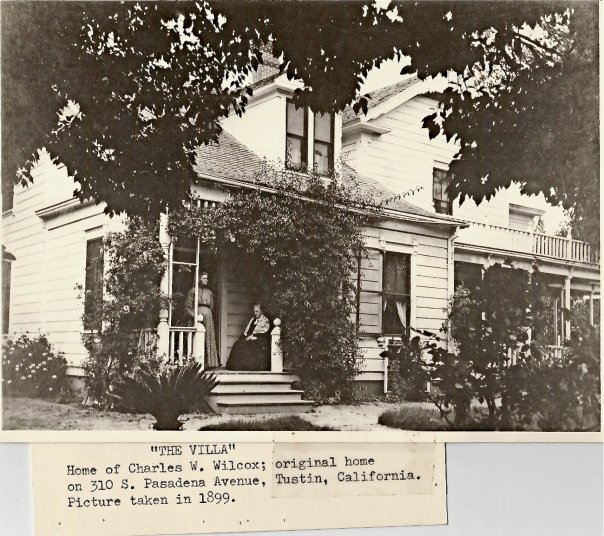A little History: Wilcox Manor – first a little history of this magnificent property and it’s first and subsequent owners.

310 S. Pasadena Avenue is a significant example of the Italianate style and its association with early Tustin residents. This building’s character defining features include, but are not limited to a flat roof, with an enclosed cornice, an exterior clad in stucco. Double hung windows, typical of those used in the 1870s and 1880s, are found throughout the building; two are centered in the front facade, and on the second floor’s small single paned window on the north side, near the eaves. This structure is rated 4S7 (Rated A) on the City of Tustin Historic Resources Survey Report. These are among the highest ratings and make the structure eligible for the National Register of Historic Places.
The original use of this property was most likely a stagecoach stop during the horse drawn era of the 1800s. More recent records indicate that Charles Wheaton Wilcox, early Tustin pioneer, bought a three-story hotel, he removed one story, and used the remaining building as a residence he dubbed “The Villa”. Mr. Wilcox had a large collection of books at that he housed in a eucalyptus wood-paneled library, one of the earliest uses of this wood in the United States. An early entrepreneur, Mr. Wilcox was a founder and director of the First National Bank of Tustin. He planted concord grapes on his property at Tustin Avenue and First Street and was an orchardist and amateur horticulturist he is known as the first to five varieties of citrus onto one root called the fruit cocktail tree. Along with a gentleman named Dr. Wall, Mr. Wilcox started a packinghouse, the first in the area, and later formed the Santiago Fruit Growers Association in Orange. Other accomplishments include starting the Episcopal Church of Tustin, director of the Santa Ana Abstract Company and receiver of the old Seibert Bank in Santa Ana. His family owned this property from 1893 to 1920 but they did not reside at this site after 1916. Renters occupied the building until John Rinard purchased the home in 1920, at this time he modernized the interior adding electricity, running water and stucco to the clapboard structure. Mr. Rinard, the registered owner through 1946, converted the house into apartments. Over the years, a large portion of the home was removed possibly due to fire or decay or just being sold off, leaving it in its present footprint today.

The Bode Family owned the home from the late 1940’s until 2007, the couple were from the Netherlands and raised 8 children in this large home with a single bathroom. In 2007, current owners Michael Demoratz and Lindburgh McPherson set about bring the property to its current grandeur. They prepared the home for inspection and consideration for a Mills Act contract and received this designation as a historic structure in 2009. Adding a 2-car oversized garage carefully matching the exterior of the main house and a music room, 2 small powder rooms for guests and a large covered patio to the rear of the property in 2010.
In 2012, the owners, having opened the home over the years for charity saw the opportunity to share the residence with young couples getting married, families and friends celebrating achievements and milestones and business for corporate events and decided to pursue a conditional use permit application, a fairly detailed and lengthy process.
On August 20, 2013 the City of Tustin’s City Council adopted Resolution No. 13-74 and approved Conditional Use Permit 2012-10 authorizing 24 outdoor charitable and paid events per year at the Wilcox Manor – 310 South Pasadena Avenue. Granting the owners a “conditional use permit” for this property allows for limited rental access of the property for use by those with discriminating tastes and a desire for a unique setting for their event. By choosing this venue you are part of a special limited group of individuals who will be given access to the property.
One additional condition of Resolution No. 13-74 required the properties owners, within one year of the date of approval, to develop an interpretive model of the site and/or historic structures along with educational materials of the history of the structure, its significance to Old Town, and to the City of Tustin as a whole – you can view the Wilcox Manor Virtual Home Tour by clicking on the link.




